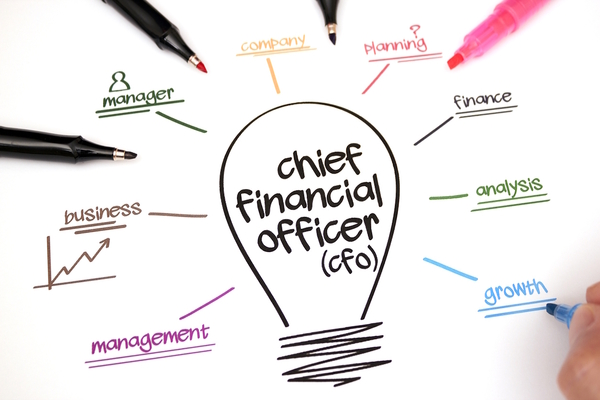Why TCO in e-commerce is key to efficient innovation
Sponsored by BigCommerceUnderstanding total cost of ownership in e-commerce is essential for achieving sustainable advantages and long-term profitability

In today’s fast-paced e-commerce landscape, where changes are rapid and competition is fierce, business leaders must make informed decisions that ensure growth and sustainability. Technological innovation is essential, but it must be strategically directed and focused on delivering lasting value.
The total cost of ownership (TCO) is fundamental in this context, providing a comprehensive view of the costs associated with each technological investment enabling efficient planning.
Strategic innovation: aligning technology with business goals
Innovating doesn’t simply mean implementing the latest technology available in the market. It also involves adopting solutions that meet immediate needs, drive the business forward, and align with strategic objectives. Technology should become an asset that supports long-term growth, requiring careful selection and a focus on maximising the added value it brings to the business.
TCO plays a crucial role in helping companies make well-informed and sustainable decisions. It enables them to evaluate all the implications of an investment over time, from initial implementation and integration costs to maintenance, training and updates.
This comprehensive approach helps avoid financial surprises and ensures resources are used optimally. By focusing on technologies that offer flexibility and scalability, businesses can ensure that the initial investment has a sustained return over time, enabling them to adapt to market demands without incurring significant additional costs. Aligning technology with business goals enhances competitiveness and enables companies to innovate sustainably.
E-commerce and TCO: building a competitive edge
E-commerce has become one of the most dynamic and strategic areas for many businesses, and TCO significantly impacts this. For e-commerce to be a competitive advantage, leaders need to understand that TCO encompasses much more than the initial cost of a platform. Every e-commerce decision involves a series of future expenses, such as system integration, regular updates and staff training, all of which must be managed to maximise return on investment.
A flexible and composable e-commerce platform allows businesses to adapt to market demands and changing customer needs quickly. This flexibility enables the integration of new tools and technologies, without the need for costly infrastructure changes. Additionally, a composable platform facilitates adaptation to new regulations or market trends without negatively impacting the budget or business operations. In such a competitive environment, focusing on TCO in e-commerce is essential for creating a robust and adaptable technological foundation.
Keys to leading successfully in e-commerce
To ensure success and maximise the value of the investment, e-commerce leaders should focus on these key aspects:
- Comprehensive TCO assessment. Understanding all components of TCO is essential to avoid unexpected costs and ensure long-term financial sustainability. This assessment includes both initial costs and future expenses for maintenance, updates and training.
- Flexibility and composability. E-commerce solutions must be flexible and composable, allowing new technologies to be integrated and adapting to market changes. This avoids additional costs when implementing improvements and ensures the platform can evolve alongside the business.
- Focus on long-term value. Technological investments should be viewed as a commitment to long-term value. It’s not enough to reduce short-term costs; these investments must also contribute to the sustainable growth and profitability of the business.
BigCommerce: lower TCO, greater value for your e-commerce
BigCommerce is a leading e-commerce platform that has transformed the way businesses manage their TCO, providing an infrastructure that minimises maintenance costs and maximises return on investment. Thanks to its API-based architecture and composable approach, BigCommerce enables companies to integrate the best tools in the market without the hidden costs that often arise with other platforms.
The benefits of BigCommerce include:
- Cost savings. Its SaaS model eliminates the need for costly maintenance, allowing companies to focus on strategic growth areas in their e-commerce.
- Increased competitiveness. BigCommerce’s flexibility allows companies to react quickly to new opportunities and market trends, maintaining a competitive edge.
- Optimised time to market. The ability to launch products and adapt to new markets quickly is a key added value that BigCommerce offers. This translates into greater agility and a shorter response time to shifts in consumer demand.
- Improved conversion rates. With advanced SEO tools, an optimised user experience and a focus on customer experience, BigCommerce helps boost conversion rates, facilitating sustainable revenue growth.
With BigCommerce, businesses can focus on growth and expansion strategies instead of worrying about technical details and hidden costs. The platform is ideal for those seeking an e-commerce solution that delivers real value and long-term sustainability.
To learn more about TCO and how it can benefit your ecommerce, please visit bigcommerce.es/Tco-DM

Business Reporter Team
Most Viewed
Winston House, 3rd Floor, Units 306-309, 2-4 Dollis Park, London, N3 1HF
23-29 Hendon Lane, London, N3 1RT
020 8349 4363
© 2024, Lyonsdown Limited. Business Reporter® is a registered trademark of Lyonsdown Ltd. VAT registration number: 830519543





